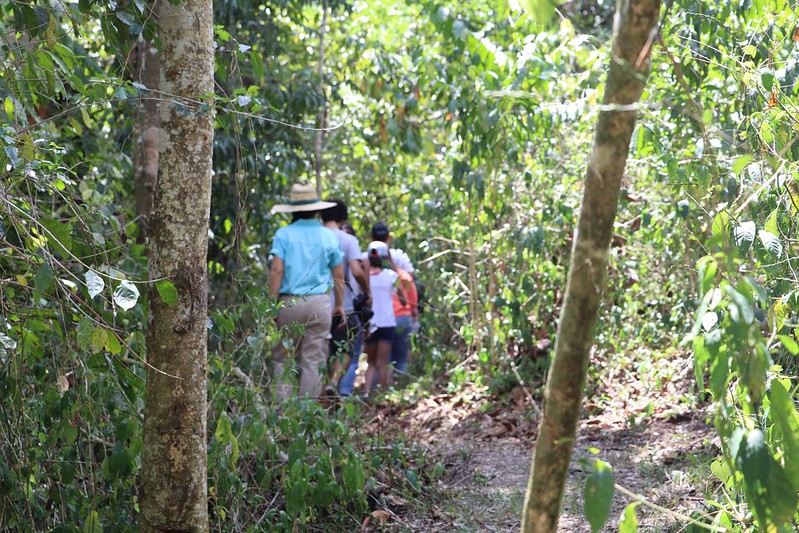Community Forest and Open Space Program
The Community Forest and Open Space Conservation Program (Community Forest Program) of the Forest Service offers a unique opportunity for communities to acquire and conserve forests that provide public access and recreational opportunities, protect vital water supplies and wildlife habitat, serve as demonstration sites for private forest landowners, and provide economic benefits from timber and non-timber products.
Program Basics:
- Full fee title acquisition is required. Conservation easements are not eligible.
- Community Forests can be owned by local governments, tribal governments, and qualified nonprofit entities.
- The program pays up to 50% of the project costs and requires a 50% non-federal match.
- Public access is required for Community Forest Program projects.
- Acquisition areas are selected through a National Competition.
- All proposals for Puerto Rico need to be submitted in collaboration with the Department of Natural and Environmental Resources and USDA Forest Service at the International Institute of Tropical Forestry.
- All proposals for US Virgin Islands need to be submitted in collaboration with the VI Department of Agriculture and the USDA Forest Service at the International Institute of Tropical Forestry.
How to Apply
The Forest Service publishes an annual request for applications for the Community Forest Program (CFP) in the Federal Register. Applications are encouraged from across the country.
If you are interested in applying, contact your CFP Regional Contact. For complete information on the program and application process, see the new Community Forest Road Map, a resource for potential program applicants or grant recipients.
The Río Hondo Community Forest
The Autonomous Municipality of Mayaguez in Puerto Rico in partnership with the community-based nonprofit organization “Proyecto Agro Eco Turístico del Barrio Río Hondo Inc.” (Estampas), acquired 67.9 acres of land in September 2018 for the establishment of a community forest. This forest is the first one of its kind in Puerto Rico and the Caribbean to receive funds from the Community Forest and Open Space Program through State, Private and Tribal Forestry.
In March 2019, the community finally celebrated in Mayagüez the acquisition of its forest, a fight that the residents of the community held for 10 years. The property is the only large block of continuous forest remaining in the area and is surrounded by sub-urban communities, rural subdivisions, and several housing projects.
The place has great ecological and recreational value, not only for the community, but for the entire municipality and the enjoyment of the entire population. The property is 90% forested and consists of a secondary forest, as a result of the abandonment of previous agricultural uses.
Community Forest Management Plan
The University of Puerto Rico in Mayagüez, College of Agricultural Sciences, collaborated with the Municipality and Estampas to develop the Community Forest Management Plan. University professors Germán Ramos, Ph.D. and Oscar Abelleira, Ph.D., were in charge of assisting the community to develop its management plan.
This project is a result of community and local government efforts to acquire, manage and conserve the forest for long-term basis.

 Río Hondo Community Forest. March 2019.
Río Hondo Community Forest. March 2019.
Multiple Benefits
After the establishment of the project, the multiple community, economic, environmental, social and recreational benefits have been maximized. The community around is densely populated and there are ongoing housing development projects. The community forest currently protects the land from threats related to non-forest uses. With the project, the development of a one-of-a kind agro-ecotourism project is taking place to promote eco-friendly practices and sustainable forest management to the general public. Business opportunities will also be created through the possibilities of hosting conferences, guided tours and bird watching, among others.
Forest Structure
The forest regenerated through natural processes after cessation of previous agricultural practices associated with sugar cane, coffee, and grazing. The forest is composed of trees of white acacia (Albizia procera), guaraguao (Guarea trichilioides), fruit trees such as mango (Mangifera indica), guamá (Inga laurina), shrubs, and old coffee trees (Coffea arabica).
Related Resources
Related News
- Comunidad de Río Hondo en Mayagüez celebro con éxito la adquisición de su bosque comunitario
- Río Hondo Community in Mayagüez celebrated the acquisition of its community forest
- Celebrarán la adquisición de El Bosque Comunitario De Río Hondo en Mayagüez
- Community celebrates the acquisition of urban forest in Mayagüez
Related Links
Contact Information
For more information about the Community Forest and Open Space Program please contact:
State, Private and Tribal Forestry Program Manager: Magaly Figueroa 787-764-7718
Page last modified: 12/09/2020


